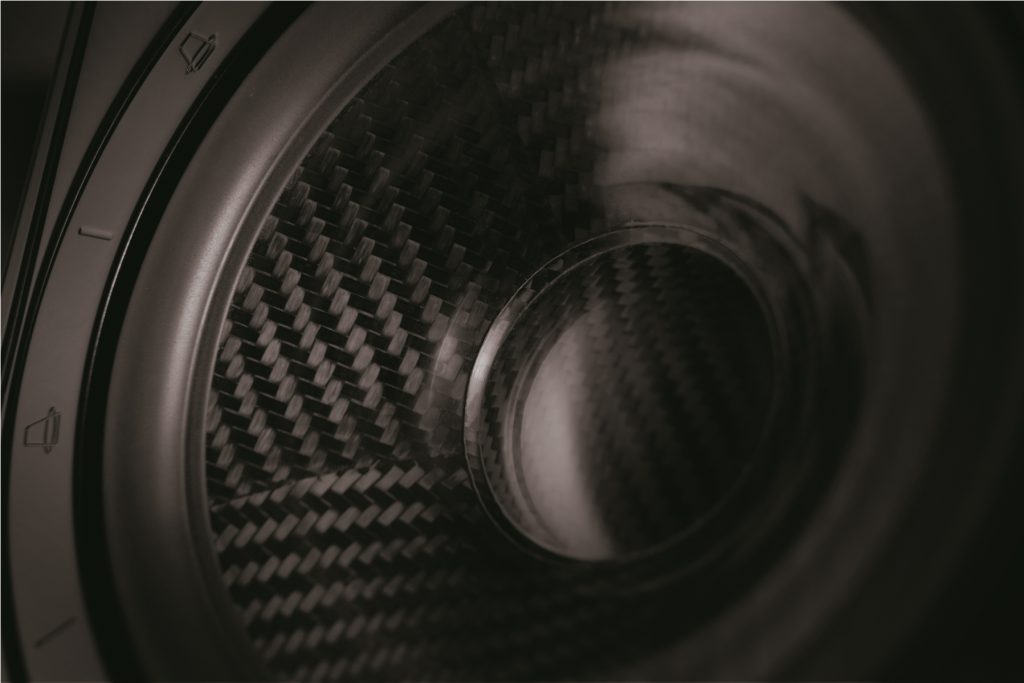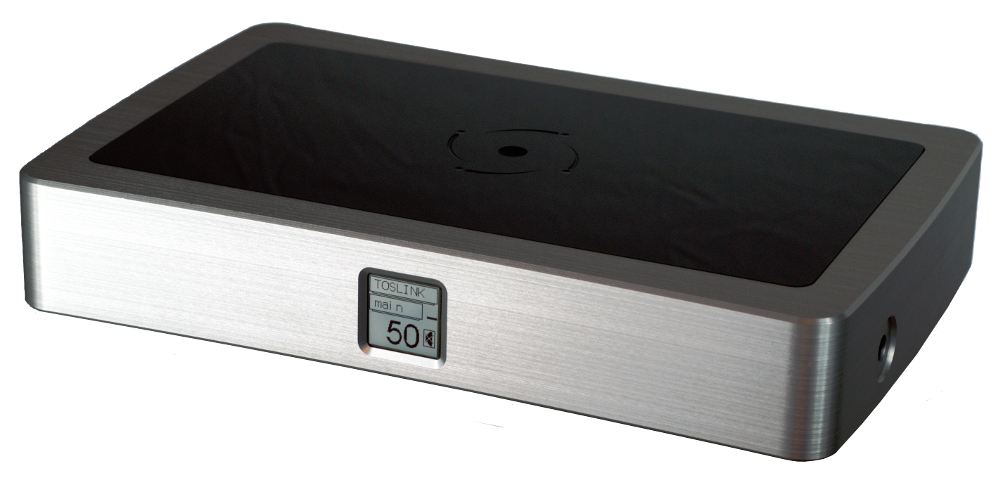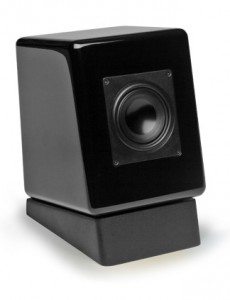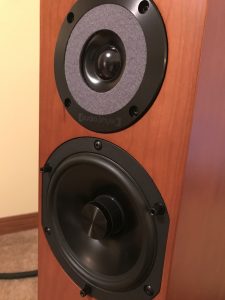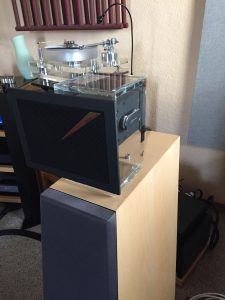Monologue: Kharma Loudspeakers…producing the sound of bowed and plucked strings alike with color, humanness, and texture.
In this age of industrial wealth and manufacturing proficiency, the audio industry has leaped forward with a proliferation of companies now capable of adopting engineering and construction techniques that elevate quality to unforeseen levels. You only have to look at the manufacturing marvel that is Kharma to appreciate that such levels of design, fabrication, and fit and finish were once only made in dreams. This unprecedented level of build quality has also been adopted in the loudspeaker realm. A number of companies have produced state-of-the-art flagship models of truly extraordinary quality in every design aspect.
The Dutch Kharma company is certainly among those engineering-driven companies with an astute eye for aesthetic design that offer "ne plus ultra" products (I almost suggested Je ne sais quoi but I sometimes don't know what that actually is) while steadily enriching their more affordable ranges with trickle-down tech. Witness here the dB7-S speaker from their Elegance line. Rarely have I seen such manufacturing and aesthetic excellence as in these stunningly beautiful speakers. Every aspect of their overall gorgeousness has been elevated to an absolutely immaculate outcome. Such striking beauty begs a get-go description of physical appearance which then will lead to more profound matters related to specifications and performance. The review pair came in a flawlessly applied gloss aubergine with no ripple, orange peel, or imperfection in sight. Nowhere. Absolute perfection. Equal care was applied to all aspects of the construction. The cabinet is extremely solid. The thing is resonance dead.
Elegance dB7-S
In the world of standard dynamic loudspeakers, the dB7-S presents a level of excellence in performance and design, and a synergy in acoustical, electro-mechanical, and aesthetic design. Multidisciplinary engineering on avoiding structure born and non-structure born resonances supporting the holy grail of unrevealing complex musical sound-scapes, and reproducing them all in a reasonably compact, nice aesthetic design to bring auditory and visual pleasure.
The four Elegance Signature loudspeaker versions have a different treatment and several levels of mechanical and operational improvement.
Kharma Describes the Elegance Signature Differences, acoustic and mechanical:
Kharma Omega-7 driver: For the midrange section, the Kharma Composite Driver in the standard version is interchanged with the Kharma Omega-7 driver in the Signature version. This Omega-7 driver is based on Ultra High Modulus carbon fibre. The use of these ultra-stiff carbon fibre and a unique resin, together with a proprietary production process, displaces the break-up frequencies of the cone, in comparison with the Kharma Composite driver, to an even more refined level of excellence. This upgrade of the driver is the only upgrade that also changes the appearance of the speaker. The other upgrades are only audible because of their internal application.
Enhanced damping: The acoustical damping of the cabinet interior is enhanced to better absorb all energy in a wide frequency range.
Enhanced internal wiring: The cross-sectional conductive area of the internal wiring is increased to have a more refined signal transmission between the crossover and the drivers.
Vibration-reducing compound: The crossover and bass tuning port on the back plate of the Elegance are treated with a special compound to mitigate mechanical vibration to the lowest point allowed by the laws of physics.
The CES Innovation Award
Kharma has presented the Elegance Line of loudspeakers and dB7-S for formal debut to North America, which had been rewarded with the CES Innovations Award. The loudspeaker was judged upon different fields of engineering, aesthetic design qualities, user's value and, of course, its innovative element. The dB7-S was judged by a pre-eminent panel of independent industrial designers, independent engineers, and members of the trade media to honor outstanding design and engineering in cutting edge consumer electronics products across 29 product categories.
The midrange/lower frequency driver of this speaker is formed by the 7-inch Kharma Omega 7 driver which is equipped with a new cone technology developed by Kharma. Moreover, finite element analysis with advanced computer systems have lead to optimized cone-shapes, with a near perfect behavior for a 7-inch driver.
Technical specifications
- Kharma EL-dB7-1.0 ( dB7-S )
- System: 2-way
- RMS Power: 150 Watt
- Program power: 300 Watt
- Frequency range: 29Hz - 30kHz
- Nominal Impedance: 4 Ohm. Effective 2.83V / 1m:88
- dB Maximum SPL: 110 dB
- Dimensions including stand: Width: 358 mm / 14.09 inch. Height: 1011 mm / 39.80 inch. Depth: 586 mm / 23.07 inch
This dB7-S has a unique polygonal shaped cabinet for optimum phase behavior and minimum group time-delay. Delightfully, this allows for presentation of music in accurate time and space, something to be proud of from a design and engineering perspective. Besides that, the cabinet is made of 35 mm high density MDF to increase the neutrality and is equipped with advanced acoustic damping materials to absorb the energy in a wide frequency range.
The beauty of the new Elegance dB7-S is shown by the many details. First of all this speaker has luxury rings around the drivers, which hide the mechanical screws of the driver. Moreover the speaker is accentuated by many chrome details like the logo plates on the front and side, and parts of the completely redesigned SDSS-stand. Not to be forgotten is that the back side of this speaker is designed in perfection and shows the true dedication of Kharma.
The dB7-S has also a new improved grille, which is made detachable by embedded magnets, allowing you to really have the freedom to adapt the Elegance dB7-S to your own style. With this grille, the Elegance gives an elegant and luxury feeling, where the dB7-S without grille shows the beauty of the new composite drivers without actually showing that a grille could be attached magnetically.
I went grille-less during my evaluation, when in doubt…go without.
Kharma founder Charles van Oosterum expanded a tad on the cabinet construction: "The shape of the cabinet is a polygon. It's shaped to minimize diffractions on the baffle and therefore minimize secondary sources of sound which the ear could lock on to. The thickness is 35mm and there is double bracing in critical places to further suppress any resonances and minimize structure-born resonances."
The gloss-black machined aluminum 'Spiked Disc Suspension System' (SDSS) outriggers were provided for this review, and are included with the loudspeakers are exemplary of finish, and in more practical terms, provide functional stability. They attach to the underside of the speaker via a set of Allen bolts and widen the footprint, enhance the looks, and provide extra tweeter height whilst potentially positively affecting bass tonality and character. Adjustable heavy-duty machined cones are included and couple to large chromed discs which will protect your floor finish whilst potentially improving sonics. The sonic benefits and extraordinary build quality highlight the "beyond reproach" aesthetic of this brand.
Rather elegantly, a thin chromed "Elegance" plate adorns the sides of the speakers, whilst around the back the audio jewelry continues. Chromed Kharma branding plates, a large reflex port with deep flaring, also chromed and customized Cardas binding posts—allowing effective hand-tightening and easy connection to your most favored speaker cable—are all positioned within a massive ridged aluminum plate. Kharma has opted for a simple 2-way configuration for this floor-standing loudspeaker. Towards the top of the enclosure, the tapered shape and rounded edges provide dispersion and image-improving opportunities, while the raked back and angled baffle may provide time aligned driver acoustic alignment.
Van Oosterum expanded on the 7-inch driver by saying that “the driver in the standard dB7 is made of carbon fiber whereas the shape of the cone has been optimized by FEA (finite element analysis) to make it as stiff as possible given the perimeter of the cone and size of the voice coil. The directions of the carbon-fiber layup as well as the method of compressing these fibers are proprietary. The dB7-S has even higher tensile strength fibers, the most advanced in the industry. Kharma are now fully engineering the whole driver as had purchased a patent for a new magnet motor. We are creating our own chassis as well. In other words, we are the creator of a new range of Kharma drivers since we believe that this can add to our extremely determined goal of making the best sounding dynamic loudspeakers. Of course it all starts at the drivers. We have many companies working with us for the different parts of the driver, the chassis, the voice coil, the tooling and the cones."
A magnetically attached dress ring surrounds the two 7-inch drivers and Kharma offer a variety of finishes which allow some form of individualization via a number of mix-and-match options. A final word on aesthetics and build quality: the Elegance Line of loudspeakers are among the very best examples of design, attention to detail, finish and build excellence I've seen. Period. Kharma specifies the dB7-S as having a frequency response from 29Hz to 30kHz (no dB latitudes), an impedance of 8 ohms and an 86dB (2.83V/1m) sensitivity. Power rating is 100 watts RMS with a program rating of 200 watts.
Equipment
Brinkmann Marconi Line-stage, McIntosh MC~250 Amplifier, C~28 Preamplifier, McIntosh MR~77 tuner , Day Sequerra Reference Monitor, Wavelength Cardinal Amplifiers, E.A.R. 890 amplifier, Avantgarde Acoustics Model 3 Integrated Amplifier, Marantz SACD player, a restored Thorens TD-124 Turntable, Brinkmann Balance Turntable, tube power supply, Brinkmann 10.5 Arm, Brinkmann 12.1 replica tonearm, Brinkmann EMT phono cartridge, Ortofon SPU and ÉMT and Koetsu rosewood phono cartridges, Breuer Silver Coaxial interconnects both in balanced and single ended configuration, Nirvana power cord and interconnects cables. Kharma new Elegance loudspeaker cables.
Charles Van Oosterum and Kharma hold proprietary the details about their "assumed" first order series or "subtractive crossover." "We use a different crossover type at about 2'250Hz. I call it a complementary crossover because the output of the signal to the drivers always adds up as one, hence no energy is ever lost. Theoretically, when drivers are acoustically able to complement each other in the transition area, there is a perfect match. You can think about the theoretical difference between a first-order parallel type and a first-order series crossover. In my view it adds to the musicality of the loudspeaker."
Equally impressive was the beryllium driver. This implementation of this tweeter showcased one smooth, refined, and filigreed unit. And its noise floor was dramatically low, with remarkable inter-note silence. That much misunderstood "black background" term applied. Other than to say that notes were clearly individualized from both each other and the recording's ambience inscription, this has to be heard to be properly understood. In the case of the dB7-S this background was of complete, profound darkness.
Music playback and observations and a bit of science
The science and mechanics of sound and music, a liberal example John Coltrane, Giant Steps.
The recording exemplifies Coltrane's melodic phrasing that came to be known as sheets of sound, and features his explorations into third-related chord movements that came to be known as Coltrane Changes. Jazz musicians continue to use the Giant Steps chord progression, which consists of a distinctive set of chords that create key centers a major third apart, as a practice piece and as a gateway into modern jazz improvisation. Several pieces on this album went on to become effective jazz standards, most prominently "Giant Steps" with second and even third harmonics which allow musical notes to hang in the air, mechanically and operationally. A true and complete loudspeaker designed for music playback and mechanical purity and partnered with a crossover engineered for music playback can demonstrate this, few can. Kharma and Charles van Oostrerum can.
The album's title track is generally considered to have one of the most difficult chord progressions of any widely played jazz composition. "Giant Steps" utilizes Coltrane Changes. His development of these altered chord progression cycles led to further experimentation with improvised melody and harmony that he continued to develop and nurture and became known across the jazz world as one of the most challenging compositions to improvise over for two reasons—it's fast and it is in three keys; rapid progression of chord changes that progress through three keys shifted by major thirds.
With a furious tempo approaching 300bpm and a quick fire series of unconventional chord changes, the song's form presents a challenge to even the most experienced of soloists of the time, and even today. Just listen, please.
A Love Supreme features examples of lines based on Giant Steps cycles over modal vamps, to create a Polytonal effect. The progression continues to stimulate harmonic thinking in contemporary jazz. There are a number of different approaches to soloing on the song. While Coltrane favored arpeggiation over the changes, other players have used different tricks and patterns to bring out the sound of the changes. The chord progression.
A recognizable circle of fifths, it illustrates a much more sophisticated scheme than basic major scale theory. Mr. Coltrane's music and composition created a series of multiplicities, and it is so very easy to infer that Coltrane is displaying a form of chromatic modulation.
In a detailed exploration of the math in Mr. Coltrane's music, all tonics of the chords used in Giant Steps can be found back at the Circle of Fifths/Fourths within 2 of the 4 augmented triads within the octave. Whatever this really is, is it hypothetical, musical or scientific? The Coltrane Circle which resembles what many quantify as the Circle of Fifths but incorporates Mr. Coltrane's own innovations. This more demonstrates second and third harmonica structure and how a loudspeaker, operating in a given space (and time) produces sound pressures that often are pleasing to the ear, even seen as very high frequency distortion, or... music.
This was expressly demonstrated whilst listening to Dead Can Dance, Into The Labyrinth, or Holly Cole's Temptation and Don't Smoke In Bed, or even Joni Mitchell's Shadows and Light. A solid bass foundation provided an extraordinary sense of instrumental body. And when all the strings were playing in manic unison, the dB7-S separated and resolved the amalgamation with utter precision.
The take-away, if there is a take-away: Kharma Loudspeakers produce the sound of bowed and plucked strings alike with color, humanness and texture.
Tied to this was superb tonal accuracy. The textures and harmonic colors of various instruments, piano in particular, were quite extraordinary. The instrument was always rendered with authentic scale whilst being extended, smooth, and realistic. A salient example is Elvis Costello and Burt Backarack's Painted From Memory (my present very most favorite LP and SACD recording). This is a very well-produced recording with layers of affection of colors and depth of purity, truly captivating. The dB7-S's tonal and dynamic veracity in that harmonics and voices and powerful drumming passages proved that a skillfully designed small floor stander can indeed surpass your average larger one and even challenge the more serious ones. Of particular merit was the way the orchestration's higher overtones decayed in a very natural way and with superb reverberation content.
The Kharma dB7-S provided a very large soundstage in all dimensions. Call it musical truth, it's okay you can, everyone that has visited here and listened has. Images were tightly locked into focus while the speakers performed the a visual and sonic disappearing act in a most in a convincing fashion. Of course the narrowing baffle and Kharma's crossover engineering and design (the company is famed for their care in design there) play important roles.
Particularly attractive was the way the dB7-S placed vocalists in a central position and as independent depictions in relief from the instrumental content. Vocal tone was quite exceptional too actually realistic, with male vocals having a tad of added weight and a very subtle thickness made up by the mid-to-upper-bass proficiency of the loudspeakers. These are beautifully made loudspeakers that are easy to place in a variety of rooms. They require at least a meter behind them, and benefit from some distance between the side of the cabinet and the side walls, at least also a meter.
Female vocals were extraordinarily present even cinematic (I'd suggest "organic" vs natural, but that word seems to suggest differing definitions in the often psychotic audio-forum world), delicate and detailed and in line with the best speakers I've ever owned (Wilson Audio, Lumen White, Dunlavy, Avantagarde Acoustic, Eggleston, JM Lab). This last was no doubt in part due to purity of design and crossover technology. In that sense the speaker exhibited a midrange that was just about as free of enclosure resonances as any monster cabinet construct.
There is no best made/perfect loudspeaker, at any price point or in an size… .
Conclusion
I know, I'm the person that, when discovering something new and interesting, purchased that new interesting thing and took it home to discover that it really was not so new or very interesting. I honestly suggest that the only way to truly understand the strengths of any given audio component is to live with it.
There might very well be a best loudspeaker for your musical purposes something that is your "object of desire," something that excites and captivates you sonically, by the product reputation, by the aesthetic, by the provenance, for use in your home with your associated equipment and musical tastes and motivations. That perfect loudspeaker for me, is simply put Kharma. Am I in love? I'm not certain, I've been in love before (and I messed that up, dramatically) and the romance of sound can often seduce.
Listening to music at an audio show isn't really enough, I've demonstrated audio products at thirty of them, in some really delightful cities in really terrible hotel rooms. And while the sound delivered can be sometimes described as impressive and able to highlight the strength of a given product, it really is not what a quality audio dealer can arrange. I also strongly suggest that you look, too, for actual a co-operative working relationship (a partnership of equals which most often reveals a foundation of natural respectful cooperation) with your store front audio provider, they actually do have your best interests in mind and built from a foundation of mutual trust, they and your sonic goals will be fulfilled, I promise.
In the case of the dB7-S, all these criteria are manifested to an extended level of distinction, from the excellent performance in all the important audio aspects via advanced drivers and meticulous crossover and enclosure design, to the extraordinary industry-leading fit and finish standards and on to the outstandingly attractive appearance further enhanced by a wide variety of optional and aesthetic customer configurable elements. In conjunction, all of these principles make up a convincing foundation for one judgment: that indeed, the dB7-S represents a true and extremely desirable high-end speaker system.
In our next installment of this Kharma evaluation we will include the Kharma MP-150 "Revised" Mono Amplifiers (they arrived Monday), and Kharma Elegance power cords and loudspeaker cabling.
In comparison to the Kharma amplifiers will an Avantgarde Acoustics Model 3 Integrated Amplifier (used as a line stage and as an integrated amplifier, a E.A.R. 890 stereo amplifier, a pair of Wavelength Cardinal mono amplifiers, and a vintage McIntosh MC-250 stereo amplifier). Line stage will be the Brinkmann Marconi.
Elegance Double Seven Signature or EL-dB7-1.0-S Loudspeakers
Retail: $31,250
Kharma International
b.v. Kalshoven 7 4825 AL
Breda The Netherlands
+31 765715010





